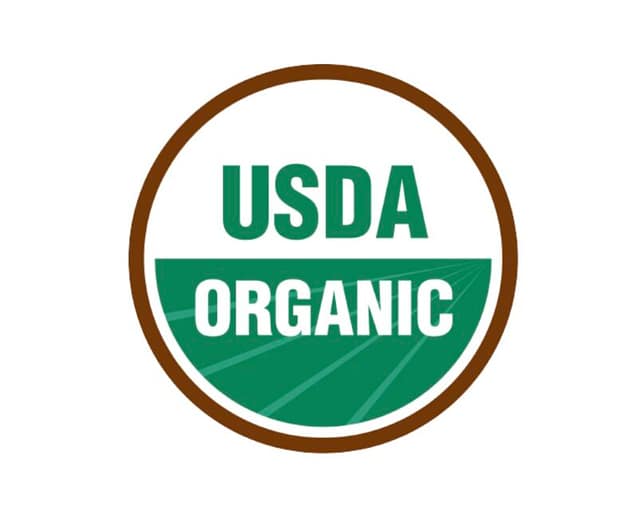To answer the question of how to detect greenwashing in personal care products, we must scrutinize ingredient labels, seek reputable certifications, investigate brand practices, and be wary of misleading packaging and marketing claims.
I. Introduction
In a world where eco-conscious consumers seek authentic, sustainable products, the term "greenwashing" has become increasingly prevalent in the personal care industry. But what exactly is greenwashing, and why does it matter?
In this blog post, we'll dive into the ways to answer "How to Detect Greenwashing in Personal Care Products." We'll define greenwashing, expose its tricks, and equip you with the knowledge to make truly informed, eco-conscious choices when shopping for personal care items. Join me as I unmask the truth behind those enticing labels and promises.
II. Understanding Greenwashing
A. Greenwashing Definition and Origins
Greenwashing is a marketing strategy that emerged in the late 20th century, originating from the environmental and sustainability movements. It involves the deceptive practice of making a product, brand, or company appear more environmentally friendly or socially responsible than it truly is.
The term "greenwashing" combines "green," signifying environmental consciousness, and "whitewashing," meaning to cover up or gloss over undesirable facts.
B. Deceptiveness and Harm of Greenwashing
Greenwashing is deceptive and harmful for several reasons:
1. Misleading Consumers
It misleads consumers who genuinely want to make eco-friendly choices by presenting false or exaggerated claims.
2. Undermining Legitimate Efforts
It can undermine the efforts of genuinely sustainable companies, as they compete with deceptive marketing tactics.
3. Eroding Trust
Greenwashing erodes consumer trust in product labeling and sustainability claims.
4. Contributing to Environmental Issues
Allowing unsustainable practices to persist, indirectly contributes to environmental degradation.
C. Common Greenwashing Tactics in Personal Care Products
1. Vague Terminology
Using vague terms like "natural," "eco-friendly," or "green" without clear definitions or certifications.
2. Misleading Imagery
Displaying images of nature or environmentally friendly symbols on packaging to create a green impression.
3. Hidden Harmful Ingredients
Including potentially harmful ingredients while promoting the product as environmentally safe.
4. Exaggerated Claims
Making exaggerated claims about the product's environmental benefits without supporting evidence.
5. Small Percentage of Natural Ingredients
Promoting a product as natural when it contains only a small percentage of natural ingredients.
6. Complex Ingredient Lists
Overloading product ingredient lists with scientific jargon to confuse consumers.
Identifying and understanding these tactics is crucial for consumers to make genuinely eco-conscious choices and hold companies accountable for their sustainability claims.
III. How to Detect Greenwashing in Personal Care Products : The Power of Ingredient Labels
A. Significance of Reading and Understanding Ingredient Labels
Reading and comprehending ingredient labels on personal care products is essential for several reasons:
1. Transparency
Ingredient labels provide transparency about what a product contains, allowing consumers to make informed choices.
2. Allergen Awareness
They help individuals with allergies or sensitivities avoid harmful ingredients.
3. Avoiding Harmful Substances
Understanding labels enables consumers to steer clear of potentially harmful or irritating ingredients.
4. Eco-Friendliness
It allows for the identification of eco-conscious products, supporting sustainability efforts.
B. Identifying Potentially Harmful or Misleading Ingredients
1. Common Harmful Ingredients
Be wary of ingredients like parabens, phthalates, sulfates, synthetic fragrances, and artificial colors, which can be harmful to health or the environment.
2. Natural vs. Synthetic
Differentiate between natural and synthetic ingredients. Natural ingredients like essential oils are often preferable for eco-conscious choices.
3. Fragrance
Look out for the term "fragrance," which can hide numerous undisclosed chemicals. Opt for products with transparent, natural scents.
4. Certifications
Seek products with certifications like "organic" or "vegan" as they often contain safer, eco-friendly ingredients.
5. Research and Allergies
If you have specific allergies or concerns, research and become familiar with ingredients to avoid any adverse reactions.
C. Tips on Researching Ingredients and Eco-Friendliness
1. Online Resources
Utilize online databases and resources that list and explain common ingredients and their safety.
2. Apps and Tools
Use smartphone apps and websites that allow you to scan product barcodes and provide ingredient information.
3. Certifications
Familiarize yourself with reputable eco-friendly certifications such as USDA Organic, Fair Trade, and Leaping Bunny (cruelty-free).
4. DIY Alternatives
Consider creating your personal care products using natural and organic ingredients, ensuring control over what goes into them.
5. Community and Reviews
Join online forums or communities where consumers share information and experiences about eco-friendly products.
6. Contact Brands
If unsure about an ingredient, reach out to the brand or manufacturer for clarification on their product's ingredients and sourcing practices.
By reading labels, identifying harmful substances, and researching eco-friendly ingredients, consumers can make informed, environmentally conscious choices when selecting personal care products.

IV. Certifications and Third-Party Verification
A. Role of Certifications and Third-Party Organizations
Certifications and third-party organizations play a pivotal role in ensuring the credibility of claims made by personal care product manufacturers. They serve as independent watchdogs, verifying that products meet specific environmental, ethical, and safety standards.
By doing so, they offer consumers a reliable way to confirm a product's legitimacy.
B. Reputable Certification Bodies for Natural and Organic Products
1. USDA Organic
The United States Department of Agriculture certifies organic products, ensuring they meet stringent criteria, including organic ingredients and environmentally friendly practices.
2. Ecocert
A global certification body on organic and natural products, Ecocert verifies the ingredients, sourcing, and manufacturing processes.
3. NSF International
NSF offers certifications for personal care products, including "NSF/ANSI 305" for organic products and "NSF/ANSI 305 – Personal Care Products Containing Organic Ingredients."
4. Leaping Bunny
Leaping Bunny certifies that products are cruelty-free, meaning they haven't been tested on animals at any stage of development.
5. Fair Trade Certified
This certification ensures that a product supports fair labor practices and ethical sourcing, especially for ingredients like shea butter and cocoa.
C. How to Verify Product Claims Through Certifications
1. Check for Logo
Look for the certification logo on the product's packaging or website. The presence of a reputable certification logo indicates that the product has undergone third-party scrutiny.
2. Research Certification
Visit the certification body's website to understand their specific criteria and standards. It will help you grasp the meaning behind the certification.
3. Consult Online Resources
Utilize online resources and databases that compile information about certified products and brands. It can simplify your search.
4. Contact the Brand
If in doubt, contact the brand directly and ask for information about their certification. Reputable companies are usually transparent about their certifications and practices.
5. Read Reviews and Recommendations
Explore reviews and recommendations from eco-conscious consumers and organizations that promote sustainability.
By leveraging these certifications and following these steps, readers can confidently verify the legitimacy of claims made by personal care product manufacturers, ensuring that the products they choose align with their eco-friendly and ethical values.
V. Analyzing Packaging and Brand Claims
A. Misleading Packaging and Branding
Packaging and branding can be misleading in personal care products due to several tactics used to create a false impression of eco-friendliness or naturalness. These tactics include:
1. Natural Imagery
The use of images of nature, greenery, or eco-friendly symbols on packaging can create a perception of environmental friendliness, even if the product's contents do not align with these visuals.
2. Green Color Schemes
Products packaged in shades of green or earthy tones may suggest natural or organic ingredients, but this is not always the case.
3. Ambiguous Terms
Brands may use terms like "green," "clean," "pure," or "organic" on their packaging without providing clear definitions or certifications, leaving room for interpretation.
4. Claims of Sustainability
Brands may boast about their commitment to sustainability without offering concrete evidence or details about their efforts.
B. Guidance on Deciphering Marketing Claims and Logos
1. Seek Certifications
Look for specific certifications like USDA Organic, Ecocert, or Fair Trade logos on the packaging. These certifications indicate that the product meets recognized standards.
2. Read the Fine Print
Pay attention to the fine print and descriptions on the packaging. Genuine eco-friendly claims are often accompanied by explanations of the brand's sustainable practices.
3. Check for Specifics
Look for specific claims, such as the percentage of organic or natural ingredients, cruelty-free statements, or information about sustainable sourcing and manufacturing.
4. Examine Ingredient Lists
Review the ingredient list to see if it aligns with the branding. True eco-friendly products will have ingredients that match their claims.
C. Real-Life Examples of Misleading Branding
1. Example 1 - "Green" Shampoo
A shampoo bottle with lush green packaging and images of leaves may give the impression of natural ingredients. However, a closer look at the ingredients reveals synthetic chemicals.
2. Example 2 - "Eco-Friendly" Cleaning Spray
A cleaning product labeled as "eco-friendly" may have packaging featuring clear blue skies and environmentally themed imagery. Despite the claims, it contains harmful chemicals like phthalates and sulfates.
3. Example 3 - "Organic" Skin Cream
Some skin creams may carry the word "organic" prominently on their labels, but when examined, they contain only a percentage of organic ingredients.
These examples illustrate the discrepancy between packaging and product content. Consumers should remain vigilant and critical, relying on certifications and clear, verifiable claims to make informed choices in a world where packaging and branding can often be misleading.
VI. Investigating Brand Practices
A. Importance of Researching Brand Practices
Researching a brand's environmental and ethical practices is crucial for several reasons:
1. Transparency
It ensures that the brand is transparent about its sustainability efforts and is not engaging in greenwashing.
2. Supporting Ethical Practices
By choosing brands with ethical practices, consumers can encourage responsible business conduct and fair labor conditions.
3. Environmental Impact
Understanding a brand's environmental practices allows consumers to support those actively working to minimize their ecological footprint.
4. Aligning with Values
It enables consumers to align their purchases with personal values and support brands that share their eco-conscious beliefs.
B. Steps for Conducting Background Research on a Company
1. Visit the Brand's Website
Start by visiting the brand's official website. Look for sections dedicated to sustainability, ethical practices, or corporate responsibility.
2. Read Sustainability Reports
Many companies publish annual sustainability reports that detail their environmental and social initiatives. These reports can provide insight into their efforts.
3. Check Certifications
Look for certifications like B Corp, Fair Trade, or other sustainability-related certifications. These indicate a commitment to ethical and environmental standards.
4. Search for News and Articles
Use search engines to find news articles, blog posts, and reports about the brand's practices, both positive and negative.
5. Review Social Media and Online Communities
Social media platforms and online communities may provide insights from consumers, reviews, and discussions about the brand's sustainability and ethics.
6. Contact the Brand
Reach out to the brand directly to ask specific questions about their practices and request information on topics important to you.

VII. DIY and Homemade Alternatives
A. DIY Personal Care Product Alternatives
1. Homemade Face Scrub
Mix organic brown sugar with coconut oil for a gentle exfoliating face scrub.
2. Natural Deodorant
Combine coconut oil, arrowroot powder, baking soda, and your choice of essential oils for a homemade deodorant.
3. DIY Toothpaste
Blend baking soda, coconut oil, and peppermint essential oil for a natural toothpaste.
4. Homemade Hair Mask
Whisk together avocado, honey, and olive oil to create a nourishing hair mask. Read my blog post about deep conditioning for all hair type.
5. Soothing Lip Balm
Melt beeswax, shea butter, and a touch of your favorite essential oil for a DIY lip balm.
B. Benefits of Creating Your Products
1. Transparency
You have complete control over the ingredients, ensuring no harmful or undisclosed substances.
2. Eco-Friendliness
By using organic, sustainable, and locally sourced ingredients, you can minimize your environmental impact.
3. Customization
Tailor products to your specific needs, like adjusting the scent or consistency to your liking.
4. Cost-Effective
Making your products is often more budget-friendly in the long run.
5. Avoiding Harmful Chemicals
Homemade products allow you to skip potentially harmful synthetic chemicals in commercial products.
6. Reducing Packaging Waste
DIY personal care products often have less packaging waste, contributing to a more sustainable lifestyle.
7. Empowerment
Creating your products empowers you to take charge of your well-being and contribute to a more eco-conscious lifestyle.
By making your personal care products, you can enjoy greater transparency, reduce your carbon footprint, and promote eco-friendliness while tailoring products to your preferences and needs. It's a rewarding and sustainable way to care for yourself and the planet.
VIII. Tips for Responsible Shopping
A. Practical Tips for Responsible Personal Care Product Shopping
1. Read Labels
Always scrutinize product labels for ingredient lists, certifications, and claims. Look for transparency in both packaging and content.
2. Seek Certifications
Look for reputable certifications like USDA Organic, Fair Trade, or Leaping Bunny to ensure product credibility.
3. Research Brands
Conduct background research on brands to learn about their ethical and environmental practices. Their websites and sustainability reports can provide valuable information.
4. Avoid Greenwashing
Be aware of misleading packaging and branding. Focus on concrete information and certifications rather than vague claims.
5. Understand Ingredients
Familiarize yourself with common personal care product ingredients, especially those you want to avoid, and those that align with your eco-friendly values.
6. Support Local and Sustainable
Whenever possible, choose local and sustainably sourced products to reduce the carbon footprint and promote ethical practices.
7. DIY When Feasible
Consider making your personal care products at home for control over ingredients and sustainability.
8. Reduce Single-Use Items
Opt for reusable or refillable product options to minimize packaging waste.
B. The Role of Consumer Awareness and Demand for Transparency
Consumer awareness and demand for transparency are powerful catalysts for positive change. When consumers prioritize eco-friendly and ethical products, it encourages brands to meet these demands. By being informed and discerning shoppers, consumers can:
- Hold brands accountable for their sustainability claims.
- Drive the industry toward more ethical and environmentally responsible practices.
- Promote a market that values transparency, sustainability, and fairness.
C. Encourage Sharing Knowledge
Sharing your knowledge about responsible personal care product shopping with others is essential. Encourage friends, family, and social networks to make informed choices.
Start conversations, recommend brands, and share your experiences with eco-conscious products. Together, we can create a ripple effect, influencing more people to make sustainable and ethical choices, leading to a healthier planet and better personal care industry practices.
IX. Additional References
- Unveiling the “Veil” of information disclosure: Sustainability reporting “greenwashing” and “shared value” (2023) https://www.ncbi.nlm.nih.gov/pmc/articles/PMC9847897/
- Greenwash and green brand equity: The mediating role of green brand image, green satisfaction, and green trust, and the moderating role of green concern (2022) https://www.ncbi.nlm.nih.gov/pmc/articles/PMC9648735/
- Green Trust as a Mediator in the Relationship between Green Advertising Skepticism, Environmental Knowledge, and Intention to Buy Green Food (2022) https://www.ncbi.nlm.nih.gov/pmc/articles/PMC9779173/
X. Conclusion
In the world of personal care products, the quest for authenticity and eco-consciousness is paramount. In this journey of "How to Detect Greenwashing in Personal Care Products," we've uncovered the deceptive tactics brands often employ to create an illusion of sustainability.
We've dived into ingredient labels, certifications, and the significance of brand practices, all vital tools in your arsenal for detecting greenwashing.
A. As you reflect on this exploration, remember these key takeaways:
1. Transparency Is Key
Reading ingredient labels, seeking reputable certifications, and researching brand practices are crucial for discerning genuine eco-friendly products from imposters.
2. The Power of Your Choices
Making informed, eco-conscious choices isn't just about personal wellness; it's about promoting ethical and sustainable practices that ripple throughout the industry.
3. Advocates for Transparency
By being vigilant consumers and advocates for transparency, you can influence brands to uphold ethical standards and the planet's well-being.
As you embark on your personal care product journey, may your choices be guided by knowledge, conscience, and the unwavering commitment to creating a world where authentic sustainability is not just a label but a way of life. Together, we can foster a brighter, greener future.
XI. My Experience
In my journey of understanding "How to Detect Greenwashing in Personal Care Products," I've learned the invaluable lesson that we should always be wary of the lurking shadows of greenwashing. As someone deeply committed to promoting real natural, vegan, and organic ingredients in personal care products, this exploration reinforced the importance of staying vigilant.
Over time, I've appreciated the significance of scrutinizing ingredient labels, seeking reliable certifications, and researching brand practices. It's not just about making informed choices for personal health, but also about championing authentic sustainability.
With every choice I make, whether in oil for oil pulling (read my blog posts about them) or any purchases, I strive to align with my values. It ensures that my selections are both eco-conscious and ethically sound. My experience has reaffirmed that the fight against greenwashing begins with an informed consumer dedicated to transparency and authenticity, making strides toward a greener, cleaner future.
Let’s connect!
If you've found this blog post on "How to Detect Greenwashing in Personal Care Products" informative and inspiring, I invite you to explore more of my content on natural, vegan, and organic ingredients in food, skincare, and personal care products.
Our journey is just beginning, and your experiences and discoveries are invaluable. Connect with me, share your stories, and let's continue this meaningful conversation.
Join me in advocating for transparency and sustainability in personal care. Together, we can make a positive impact on our health and the planet. Explore more blog posts and reach out to me to be part of this eco-conscious community.

 Simple. Natural. Better.
Simple. Natural. Better.